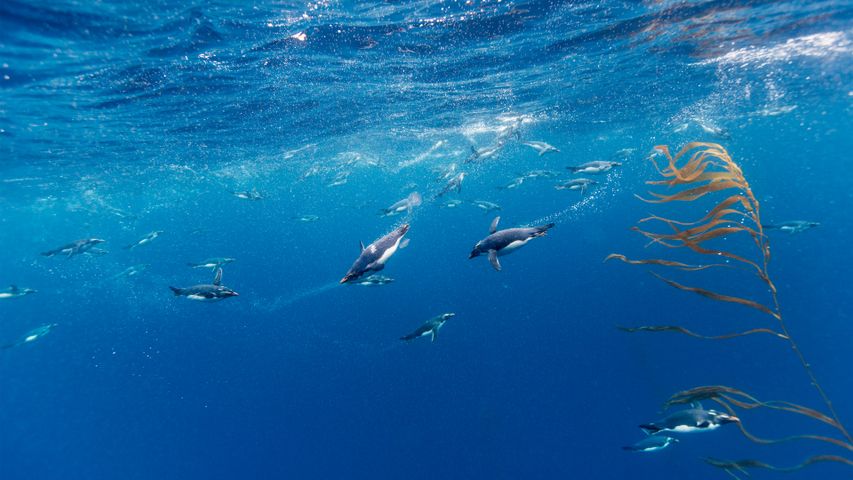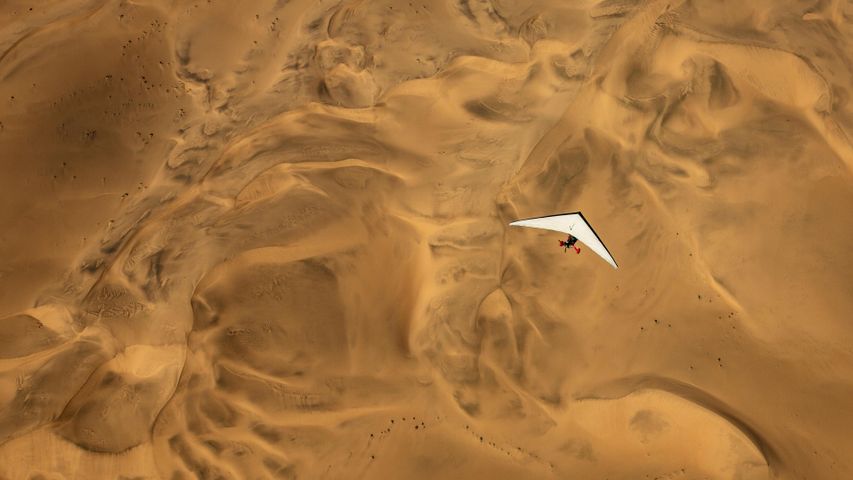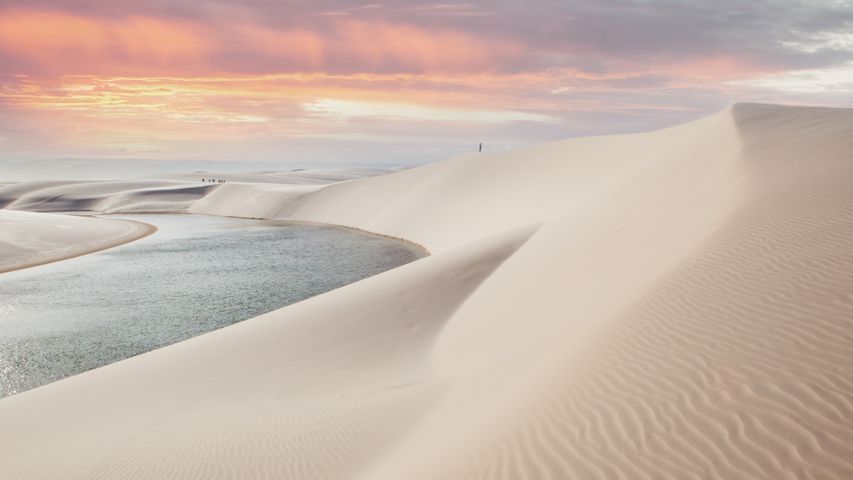Gypsum sand dunes, White Sands National Park, New Mexico
© Grant Kaye/Cavan Image
Sands of time
At a quick glance, you might mistake these dunes for massive snowdrifts. Although they do make for great sledding, the tiny crystals that make up White Sands National Park in New Mexico, are not ice but gypsum, a soft mineral often used to make plaster and chalk. The pearly sands compose the largest gypsum dune field in the world but cover just a fraction of southern New Mexico's Tularosa Basin.
This vast desert valley—more extensive than some U.S. states at 16,800 square kilometres—is mostly occupied by White Sands Missile Range. The active military installation—the US's largest by area—surrounds the national park and includes the Trinity site, where the first atomic bomb was detonated in 1945. That event altered the course of humanity's future, but the White Sands region is also defined by echoes from our very distant past: recently, scientists have used radar technology to zero in on prehistoric human, mammoth, and giant sloth footprints buried long ago beneath the shifting sands.
Related Images
Bing Today Images






 Mesquite Flat Sand Dunes in Death Valley National Park, California, United States
Mesquite Flat Sand Dunes in Death Valley National Park, California, United States
 An ultralight aircraft flying over the sands of Namibia
An ultralight aircraft flying over the sands of Namibia
 Sandstone formations in the badlands near Caineville, Utah, United States
Sandstone formations in the badlands near Caineville, Utah, United States
 Lake Tyrrell, Victoria, Australia
Lake Tyrrell, Victoria, Australia
 Sunset at White Sands National Park, New Mexico, USA
Sunset at White Sands National Park, New Mexico, USA
 Sossusvlei sand dunes, Namib desert, Namibia
Sossusvlei sand dunes, Namib desert, Namibia
 Sunset in Lençóis Maranhenses National Park, Maranhão, Brazil
Sunset in Lençóis Maranhenses National Park, Maranhão, Brazil
 Beach at sunrise, Gulf Islands National Seashore, Florida, USA
Beach at sunrise, Gulf Islands National Seashore, Florida, USA
